«the next step for the progressive museum will be post-critical realism»
Artist Arseny Zhilyaev and Katerina Chuchalina, curator and program director of the V-A-C Foundation, discuss the possibilities for collaboration with Russian museums outside the sphere of art, experimental exhibition-making, and the changing role of museum bureaucracy.
arseny zhilyaev: Katya, like me, you have been putting together projects for Moscow’s non-art museums for quite some time now. Why is it that lately there seems to be this feeling of exhaustion, like continuing these kinds of collaborations is no longer possible? Of course, there are some objective factors. The cancellation of the exhibition in the Memorial Museum of Cosmonautics, harsher censorship policies – but it seems to me, these are only surface-level. If we are going to talk about censorship, then the conversation needs to be about not only state censors, but also self-censorship and the attempts of institution or museum workers to predict – and in this case, actually enforce – the ideologically correct interpretation of their exhibitions. In this sense, the situation with the MMC was extremely interesting, because the Russian museum is the first to so openly demonstrate that it is doing practically the same thing as the artists –developing alternative worlds, with only varying levels of correlation to actual reality. “We do not like the interpretation of the future that Zhilyaev offered us in Cradle of Humankind, and so we will prove that the future can be different from this artistic vision.” This is very similar to how Groys described the transformation of Socialist Realism, which gradually evolved from simple painting into a conceptual project, due in part to the fact that artists were expected to anticipate future shifts in the political course of the party. But to return to the question from the beginning: is it possible that this factor, the museum’s own self-awareness as an independent creative unit – in a way, making it the artist’s competitor – is what makes interaction next to impossible in the here and now?
katerina chuchalina: It’s true, we have put together more than a few projects in non-art museums, and I have always been interested in the museum as an artistic medium; in these kinds of situations, the thematic proximity between the art project and the museum has always served as just a pretext (in the best sense of the word), a codeword for the possible start of a conversation on the politics of representation, methodology, ideology, etc; few actually do anything interesting in the museum. The Central Armed Forces Museum, the Presnya Historical Memorial Museum, the Institute for African Studies, Museum of Entrepreneurs, Patrons of the Arts and Philanthropists – they all have different stories, the outcomes of which have been dramatized to different degrees.
You say that these days it’s impossible to work and there’s a feeling of exhaustion. For me, that feeling arose already last year. I’ve sworn off attempting to forge relationships with museums in areas that haven’t been broken in in advance, and decided that I would only ever repeat that experience if there was at least a minimum of mutual interest. As for the incident with the MMC, what’s really remarkable is that it was the museum that showed such an active interest in your project and in our [i.e., V-A-C Foundation – Ed.] work in general. That’s the reason I even agreed to the idea.

Without a doubt, this state of self-censorship in which the museum finds itself creates a broad field for the construction of reality – or, more precisely, for the construction of a rhetoric of doubt. In the case of the MMC, this was a powerful mix of the rational and the mystical: from arguments about the cosmos and the history of scientific and technological progress to the pretense of issues with the fonts and designs used in your project, to turning to the unseen higher power (along with the cosmonauts), who presides over all the decision-making that goes on in the Museum of Cosmonautics, and who felt compelled to nix the Cradle of Humankind offered by Zhilyaev. Genuine respect goes to the efforts expended by the museum in piling up arguments, little by little building up to the conclusion that it would be utterly impossible to make the exhibition, rather than delivering a simple, crude “no,” which would have done just as well. But you’re right – the museum conducts itself entirely as an art project; the rhetoric around the cancellation was built on a whole other vision of Cradle of Humankind, which, with a considerable degree of the sublime, thanks to the conversations about the cosmos.
What’s also interesting to me in this situation is always the mechanism for decision-making on the presence of art in a museum. It is clear that in the majority of situations, this right belongs wholly and indivisibly to the director. At the MMC, it was more interesting, as there they have an art collection and quite a lot of experience in holding temporary exhibitions, but this means that, on the one hand, there’s formal procedure for consultation with the advisory board of the scientific museum, but on the other hand, it has a confidence in regards to its competency in determining what is art and what isn’t. And we passed through all of this, all the discussions, the meetings with the research director of the museum. Interesting that at the end of this tunnel, just at the final bend in the director’s office, there’s always this call for some document from above, which needs to certify that this is indeed art (once in a desperate situation – a week before the opening of an international project – I had to bring this kind of document to the Institute of African Studies from the Ministry of Culture.) And of course, I had no doubt that if I had that kind of document with me at the MMC, this whole episode might not have happened.
a.z.: That’s really interesting! It strikes me that this rhetoric of doubt is pretty much inherent in critical or artistic perspectives – almost as a rule. Actually, it is through this constant questioning of the monolithic ideological structure presented to us from above that art to this day pretends to possess some kind of special knowledge. In part, this is what used to distinguish the professional from the amateur, the art of the avant-garde from mass culture and kitsch. But what has happened is that in today’s reality, the artist now faces some serious competition. And here I’m not talking in terms of production capabilities – no one has any doubt here that mass media and polytechnical departments have incomparably greater potential when it comes to the formation of images and the creation of situations – but rather in terms of the inherent critical view of intention. You could say that we’ve found ourselves in an era beyond the looking glass, when what appears at some moment to be a scanning gaze turns out to be locked in a system of broken, critical mirrors. And there is no longer a clearly defined system for the ideological apparatus of the state. This public space beyond the mirror, the space of mutual surveillance, where it is already decidedly difficult to identify where the original impulse came from and which way it was pointing.

It’s at this point that we could use a new theory of reflection, one that takes all of these transformations into account. If we must acknowledge the dissolution of the critical gaze in its traditional form, so to speak, then the next step of the progressive museum will be post-critical realism. That is, a gesture that would be able to reflect (or reflect on) the total reflectiveness of contemporary Russian (and not only Russian) reality. This brings us to the very important issue of developing a new method of working. It seems to me that it is through this experience of institutional cooperation – an experience that moves beyond the framework of the individual artistic gesture – that we can map out the path for developing an adequate modern approach. To this end, could you tell us a little more about the projects in the Central Armed Forces Museum and the Institute for African Studies, and what it took to realize them?
k.c.: Yes, as it happens, our point of departure for these projects was that hypothesis about a possible way out of this situation through institutional cooperation. All the institutions we worked with were quite varied in terms of their bureaucratic and social status. A tiny, private museum, an institute in the Russian Academy of Sciences, an affiliate of a big state museum, a pavilion at V.D.N.Kh., a museum belonging to the Ministry of Defense – all of these are cultural institutions with different reflective capabilities.
The Central Armed Forces Museum, for example, where we did the project with Misha Tolmachev, “Beyond Visual Range“, is in a state of radical monumentalization. The social inquiry into the history of war as an instrument of civic education is so high that the museum exhibition is presented to us as a sacred history, inscribed on tablets, not subject to any doubt nor any discussion. A critical opinion is simply not possible there; any critique of it would have immediately led to the failure of the project. This is why the artist’s work took the form of a metatext, scattered through the halls of the main exhibition, which implicitly raised the fundamental question for this kind of museum: that of the “witness of evidence.” It just wasn’t possible to get any closer. In this situation, obviously, there is no complicated system of mirrors, there is an order from the cultural department of the Ministry of Defense concerning modernization and the need for some kind of “contemporary art” for the museum; it needed to be implemented and so it was implemented. Formally, this path was unobstructed, but the museum remains impermeable to the conversation, by virtue of its internal structure.
i am coming from a boundless faith in the museum. This provides the strength to act, no matter what.
I should say that all the projects we did were attempts at interventions, at establishing the artist’s presence not in the hall for temporary exhibitions, but within the permanent exhibition. This simple technique enables us to understand the museum and to work with it, rather than in it. Of course, any museum will always fend off this technique, and this is totally normal. After all, one of the basic principles of its functioning is the preservation of its visual and conceptual shell. Attempts to switch the placement of various objects within the museum display or to add some new twist to them is seen as a kind of attack, a desecration. The museum display is a sealed bottle; no one wants to let any genies out. And this, by the way, follows the legal model – the set of exponents inside it have been consecrated as a document by the higher authority. Obviously a museum that tows the general line with its presentation of state history, military history, or scientific and technological progress, must be wary of any cracks or breaches, where the very body of that history can begin to be transformed – which means one history can give way to a multitude.
All of these exhibitions were and remain social structures, built not just from the artist’s own work, but also from the inter-institutional relationship. The collaboration with museum workers on every level (from foundations, archives or research departments) is just as interesting as the diplomatic negotiations with the management. At the Armed Forces Museum, there was a lot of this internal work – the artist incorporated quite a lot from the stores of the museum in his own work. But, for example, the project “Ten thousand wiles and a hundred thousand tricks,” which was curated by the WHW collective, would never have taken place in the Institute for African Studies, if there was not already a solidarity between institutional structures like the Junior Scholars Council or the Kinoclub. About a month before the opening, there arose a sharp crisis between us and the institute. The director requested that we “leave everything alone” – in the silence and dust of the decadent interiors of an abandoned colonial storefront for the Soviet project. The advisory board stepped in with an official note of support for the project, which led to the fragile truce that ended up being broken all the same, after the work of the group Chto Delat in the courtyard was censored by the director, spending the opening covered up with a black cloth.
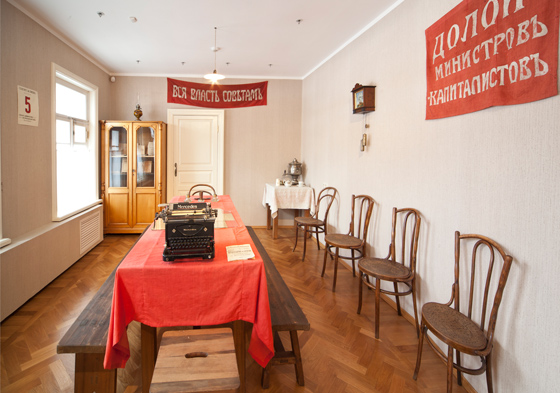
Together with you and Ilya Budraitskis, we put together “Pedagogical Poem” in the Presnya Museum. We invited theorists, historians, curators, and artists from all over the world there to discuss issues around history, art and the museum. This was an unprecedented event (in my opinion) for that museum, and yet the leadership managed to remain absolutely indifferent to what was going on all year long. That is, up until it came down to the final exhibition. Tell me, what do you take away from these two experiences – Presnya and MMC – to help understand how an artist’s project should be in order to work with museums in these public situations?
a.z.: I am coming from a boundless faith in the museum. This provides the strength to act, no matter what. On the one hand, there’s a tremendous temptation to shut oneself up in the hermetically-sealed bottle of contemporary art and to set sail on the ocean of time, in the hope that sooner or later the bottle will be picked up by some fisherman, and the message inside will finally be deciphered. Perhaps in some sense this scenario is inevitable, especially if we are talking about Russia, where the current artistic context lacks even the minimal instruments for any adequate perception of what’s going on here and now. But the transformation of this scenario is an end in itself, with the fetishization of the lonely artist and – more broadly – the autonomy of art, striking me as pretentious decadence.
It’s clear that real institutional mechanisms are transformed extremely slowly. IN all likelihood, it takes much longer than the lifespan of one artist, let alone of one artistic project. If we are coming from the radical perspective of the museum as a place capable of not only accurately reflecting reality, but of serving as its agent of progressive change, then, it goes without saying, the position of the artist is more advantageous, in the sense that the artist can slip into the mode of an laboratory experiment to create scenarios of developing reality, which includes the museum as its own vital part. Would Fedorov’s Museum of Resurrection even be possible today? In its entirety, definitely not. But the concept of the museum as a community, a cathedral for the people, directing its activities towards the transformation of art, society and humanity in general, is fully attainable in the field of art. The first Museum of Resurrection appeared in Voronezh when Fedorov was still alive. It was set up in Lev Solovyev’s own house. The museum was dedicated to Solovyev’s late wife and in addition to the permanent exhibition included a free painting school. Or we can take a more recent example: “A Museum of Immortality“, which was based on an idea proposed by Boris Groys, and realized as an installation by Anton Vidokle with the participants of his school in Beirut.
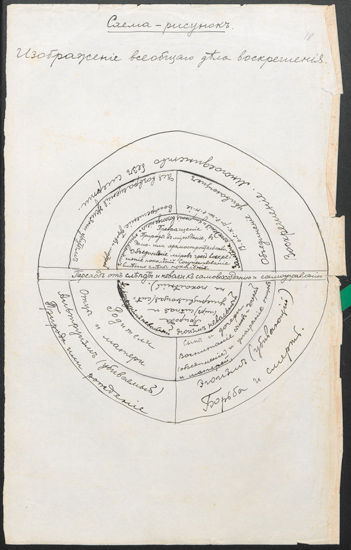
But we can go even further, to try to move beyond the bounds of the laboratory format. In a certain sense, what intelligence agencies and corporations like Google and Facebook are doing today largely corresponds with Fedorov’s impulse towards the maximum possible preservation of data about the lives of each human being. But it’s clear that the archives generated by the intelligence agencies and the corporations will not be used for resurrecting the dead, or, for that matter, any other kind of social transformation geared towards developing human potential. Control, suppression and making money – these are their primary objectives. But can we imagine a museum connecting the artist with technologies and institutional possibilities to rival those of the intelligence agencies and the corporations? This is a deliberately audacious way to structure the question, but it cannot help but inspire.
Modern museums are complicated in that they are already the products of a muddled composition of contradictory forces and circumstances. I still have some warm relationships with some of the staff at the MMC. I am convinced that people like these – people who genuinely love their work – will not allow the museum to die. This is why in every conflict it’s necessary to remember that, yes, there is this particular monolithic image of the museum as an object in itself, but then there is also the real state of affairs. For example, as we found out later, at the MMC, the leadership – including the director Natalia Artyukhina and the deputy director Vyacheslav Klimentov – worked on a contract basis, renewed every year. A contract signed under one set of political circumstances could come into effect in a completely different situation. Fluctuations in the framework of the approved ideological and business plan for the year basically set the ceiling for what they could do. In this sense, there is nothing surprising about their necessary fabrications and contradictory statements, which might strike the outside observer as quite sudden and unexpected. In all actuality, it was just an attempt to calibrate to the new shifts in the president’s administration or tweaking of Moscow’s cultural policy.
But is it enough just to service the political elite’s desire for an institution like the museum? Obviously not. So, it seems to me, that this brand of “museum limitchik,” armed with their fads and contracts and other human weaknesses, can not last too long in the museum. The museum doesn’t need them, it’s not interested in them. It surpasses them, it’s too complex. This is why I don’t lose optimism. Although the incident with the Presnya Museum provides us with a more dramatic example. There you have people who are quite dear to me and my colleagues, who truly believe in the museum, but who ended up being forced to leave it. Not too long ago, Sasha Povzner told me how at an intersection he pulled up to a taxi, and who should be behind the wheel but one of the former directors from the Presnya Museum. That same one who helped us with “Pedagogical Poem,” and then again later, when Ilya Budraitskis curated the exhibition dedicated to the tragic events of 1993. Sasha remembered this director as he was the one who had helped him hang his work on the façade of the building.
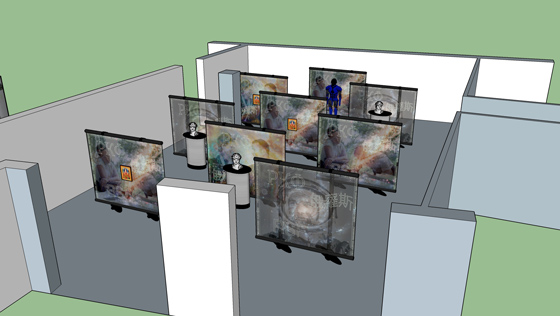
But to return to your question. Let’s speak a little more about the methodology of creative collaboration with museums and art projects that use the museum as a medium. I have always wondered how you feel about taking the role of curator in these projects? Where exactly does the boundary lie between the artist and the curator, if we’re talking about mutating the boundaries of the individual art work or about the figure of the artist taking up the position of curator? It seems to me that a lot of the museum projects that you have made had some common features, which speaks to the depth of your involvement in them. Could you give us a glimpse into your curatorial – or curator-artist – kitchen?
k.c.: You say that you have a boundless faith in the museum and its potential as an agent of progressive change. Speaking just in the abstract, I do too. But I fear that, realistically speaking, I just do not see any reason to hope for this kind of proactive position and power right this moment. I think that this potential can be returned to the museum only through a total depressurization, an open engagement with very different types of human activity, in particular with art and with artists, but I am not seeing any movement in that direction. Of course, for the museum, this would lead to the dissolution of their concept and the institution itself, but there is no other way.
I tend to act and feel like I would in the absence of the museum – not in grief over the loss, obviously, but in careful consideration of what gets called a museum right now. Our society is radioactive, the DNA of public institutions is breaking and mutating. To tell you the truth, I’m not even sure that it’s possible these days to conduct a real analysis of the list of institutions that fall under the general rubric of “museum.” What do the Garage Museum and the Museum of Entrepreneurs, Patrons of the Arts and Philanthropists have in common? Probably nothing (that is, other than their anecdotal opposition: the latter, alas, doesn’t have any patrons of the arts, and the former doesn’t have a garage.)
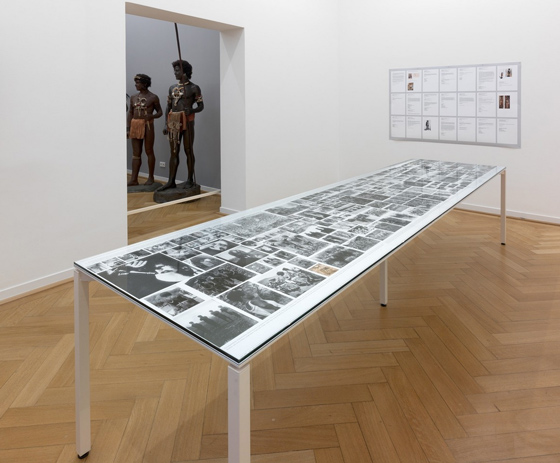
I should say that, even in the current conditions of underfunding and the relative impoverishment of the museum, we still need to desperately fear the scenario of an empty void striving to fill every centimeter of its space, constantly producing a visual environment. It’s important to understand the who, what and why of what is being done. The models in the Butyrka Prison museum are made by the prisoner’s own hands; the Forest Museum consists of objects made by woodwork; in the main display at the History Museum is a photo-collage of Hollywood films. Commercial and industrial props can be found everywhere; garlands hang over the entrance to the Gulag; kilometers of landscapes fill the biological museums, etc. Working in this environment can be fascinating, especially as art is taking on pretty much the same things – documents, archives, objects, spatial compositions, audience, social networks, media effects. But with museums and contemporary art, we find ourselves in two different worlds locked in against each another, visiting one another like squeamish critics, if at all. In the interest of fairness, we should admit that this is mutual.
There is, by the way, this incredibly fascinating phenomenon, that merits its own study museologically, but also artistically. Recently I was invited to a seminar of museum workers organized by the Gulag Museum. They basically invited people from all over the country who had made exhibitions about the Gulag. It was all self-organized initiatives and independent museum projects, not connected by any overarching directives, nor methodology, all working in response to one common need, but under different conditions: one museum was made by hiking enthusiasts, another created by the owner of the neighborhood shopping center, a third using the resources of a corporation. Or there are the museum clones in the closed military cities, which are the opposite, created to be identical, but now they are forming their own visual identity, despite the shared history forced on them.
In the international arena, I get the feeling we are treading on the same turf that was marked out through earlier projects like Fred Wilson’s famous “Mining the Museum.” This area is developing, sometimes even radicalizing – see, for example, the efforts of Clémentine Deliss, a curator heading up the newly-municipal ethnographic museum in Frankfort (municipal authorities terminated the contract with the Weltkulturen Museum last spring). She acted in an entirely radical way, “canceling” the main exhibition and handing over the exclusive right to interpret the enormous, (literally) city-building collection of this classical German museum directly to artists. Obviously, this is an area with a lot of names and projects that could be cited.

Returning to my own work, I can say that I’m equally interested in both creative research in the field of the real museum, and the systemic phenomena of gaps and loss (thematic and historical), aberration (a museum of torture and butterflies) and wholly fictional museum projects, created by artists.
It seems to me that Avant-Garde Museology makes a major contribution to this conversation. I’m sometimes asked about how you see your role as an artist when you’re dealing with a body of texts that you’ve selected, and how this situation might differ from the role you take on as the artist behind a project like Cradle of Humankind, let’s say.
a.z.: Well, yes, there probably is some form of that question that’s worth being articulated. I was following the responses to the English publication of the book, and one day I came across this post in which someone I don’t know wrote that Avant-Garde Museology is a wonderful example of a literary hoax. Because really, even for me, many of these texts seem so extravagant that it’s difficult believing in their authenticity. And by this I primarily mean the materials connected with the Marxist experiments. After the revolution, as part of the idea for forming a new proletarian identity, a lot of people without any professional cultural education went to work in the museum. Their language is really similar to that of a propaganda poster. It’s full of a transformative energy, although it often expresses itself through a set of templates. There’s nothing like it today. Except maybe in literature, like, perhaps, in the last part of Vladimir Sorokin’s early novel, Tridtsataia liubov’ Mariny [“Marina’s Thirtieth Love”], which consists of a stream of ideological clichés, taken from the speeches of Soviet nomenclature. The main difference in Sorokin’s automatic writing from the materials of these museologists is that at the end of the 1920s, this type of speech still carried some sort of meaning. But, just picture what an English-speaking researcher should think when reading about how the esteemed Soviet neurophysiologist Bekhterev suggested creating a museum commission that will open up the skulls of prominent citizens of the Soviet state to extract their brains and put them on display in the museum!
Typically my art projects explore a fictional history, purposefully made to mimic non-fiction. In the case of Avant-Garde Museology, the situation is reversed. So, in some senses, a more artistic interpretation would detract from the radicality of the materials presented in the publication.
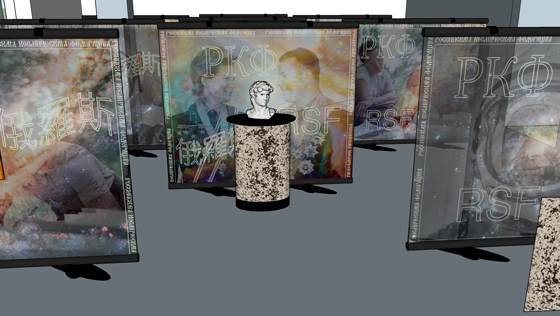
But if we’re speaking seriously, then of course, in many ways I think of Avant-Garde Museology as its own conceptual project. The idea came about as a continuation of my own research as an artist, and it carries this trauma of its birth. If we are to approach Avant-Garde Museology from the position of the strict criteria of academic knowledge, in the best sense of the word, then I should confess that the book might not fully measure up. But that was never the goal for me. The idea was always about marking out new territory and drawing up a preliminary layout. As it were, the term “avant-garde museology” didn’t exist before, as no one ever thought to bring together so many different authors and museum projects. And my basic thrust was directed at proving the possibility of considering them together as part of a larger project, albeit on a superficial level, with some significant differences intact. The book opens with a section on Russian Cosmism, which was born out of Russian religious philosophy. In particular, we published a wonderful text by Florensky on the uniqueness of the church ritual as a specific kind of synthetic art, not prone to museification. In the last part, there is a section devoted to museums of atheism and the attempt of secular exhibitions to surpass the power of religious ritual. But all of this is just part of a larger discussion about the limits of the museum, of our society, of man, science, and even the Universe, if you’ve like.
k.c.: I would love to continue this conversation, expanding it to include even more participants. Sometimes the museum gives us occasion to talk about the Universe, and sometimes you have to be precisely accurate and practical. I sincerely hope that our shared experience and the book, Avant-Garde Museology, will serve as a point of attraction for the always active cell of our colleagues from different spheres of art and culture, and that we might realize other exhibition or publishing projects in this direction.